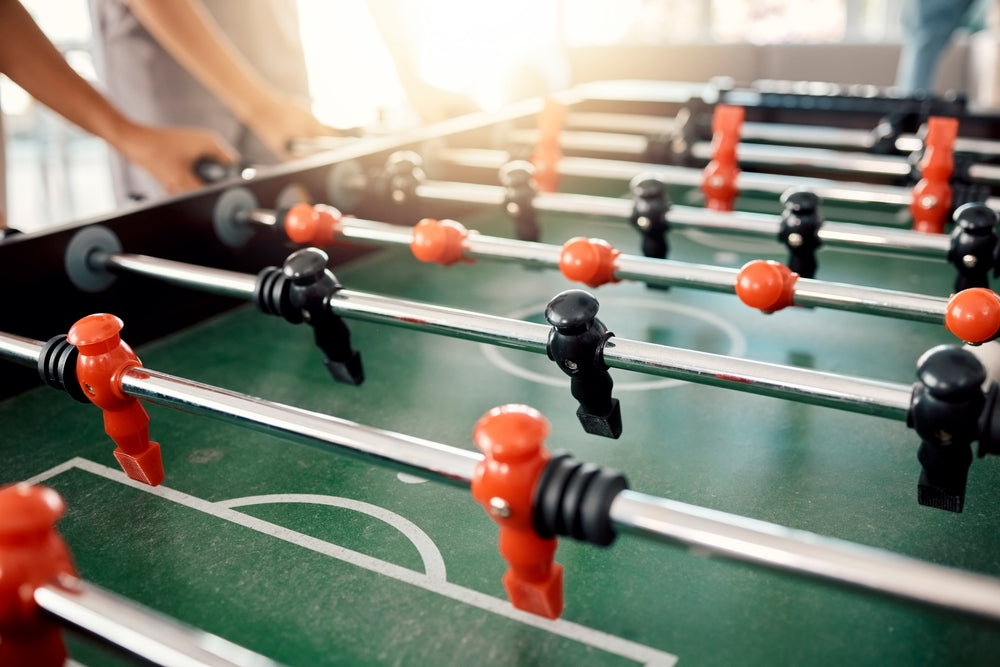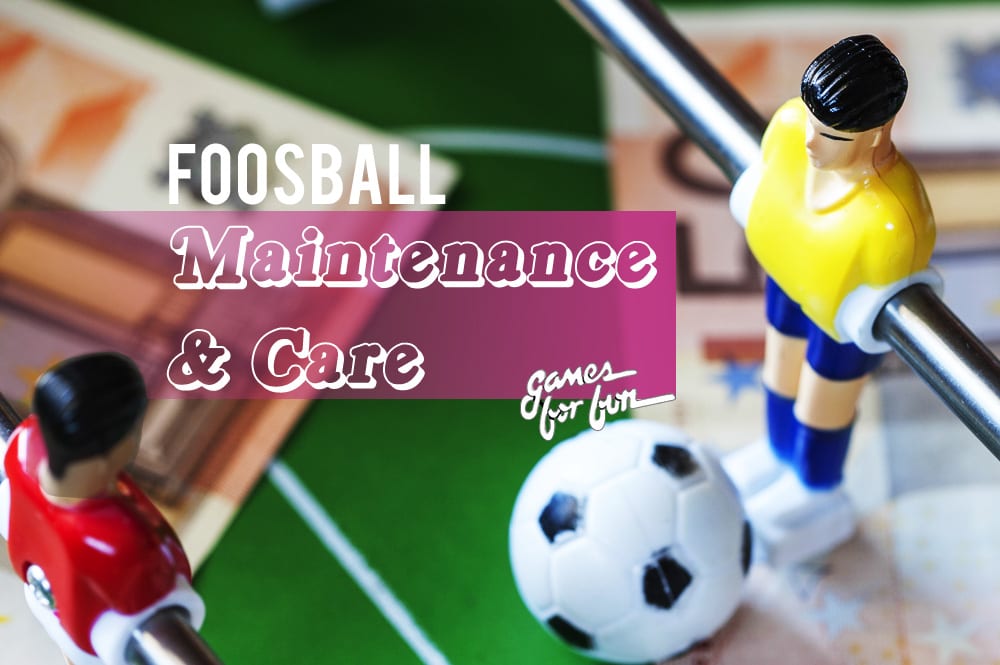Look, when I first bought this big foosball table—the serious, heavy-duty kind, not that cheap particleboard junk—I thought maintenance was a joke. Seriously, it’s a box with rods and plastic men. What’s going to go wrong? It’s not a damn engine, right? Just wipe off the spilled beer and maybe the accumulated dust bunnies every few months. That’s what I figured. I mean, who has time to oil metal rods? That’s for people who own yachts, not competitive table soccer players.

But man, was I wrong. And I found out the hard way. The really hard way.
The Day the Rods Went Rogue
We host this yearly neighborhood ‘King of the Table’ tournament. Everyone gets hammered, the trash talk flies, and the stakes are ridiculously high—usually just who buys the next round of pizza. Last year, everything was fine until the semi-finals. My neighbor, Gary, was absolutely hammering the defense, trying to pull off one of those impossible three-man shots. And suddenly, the rod just seized up. Not sticky, not slow. SEIZED. He yanked it hard—too hard, obviously—and the rod actually bent slightly where it met the bushing. Chaos. Absolute chaos. Gary started screaming that I was sabotaging the game, everyone was yelling about foul play, and the whole tournament ground to a halt because my neglected table had decided to stage a protest.
I sat there looking at this beautiful, heavy table, now literally crippled by its own refusal to move. I was so embarrassed. It cost me the pizza betting money, too. That night, I decided I wasn’t just going to clean the table; I was going to practically dismantle the thing and figure out exactly what I had missed.
I even had to buy Gary a round of drinks for the perceived ‘sabotage.’ The damage to my competitive reputation was substantial. For weeks afterward, every time someone brought up the foosball table, there was always that snide comment about the ‘jammed relic.’ My wife, bless her heart, kept telling me to just sell the damned thing and buy a new one. But I was stubborn. This wasn’t just a table; this was my table, the centerpiece of my basement. Selling it over a little friction felt like admitting defeat to a rusty rod. That’s why I went deep. I wasn’t just fixing a game; I was restoring honor.
Operation: Lube and Listen
First step, I had to understand what the hell bushings were for. I started pulling the rods out—which was harder than it sounds because they were covered in a grime mixture of beer residue, hand sweat, and maybe seven years of competitive aggression. I grabbed a rag and some random household cleaner. Big mistake. Never use Windex on your rods. It strips off whatever tiny bit of lubrication might be left and actually makes them stickier once the cleaner dries.

I called up this guy I know—Mikey, the furniture restorer—and he just laughed at me. He told me I was treating precision moving parts like a muddy shovel. He drilled it into my head: It’s all about silicone. Only silicone oil or sometimes specific PTFE lubricants. Anything else, like standard machine oil or the dreaded WD-40, just attracts dust and gums up the works faster than you can say ‘Goal!’
I remember sitting there, my hands covered in that oily, black residue, questioning my life choices. Why had I let such a simple, mechanical necessity slip? It’s the same dumb reason we forget to change the oil in the car or replace the filter in the furnace—out of sight, out of mind, until the thing screams bloody murder and throws a tantrum.
Here’s the process I settled on, which has kept the table running smoother than a politician’s alibi ever since:
- Cleaning the Surface: I wiped down the playing surface using microfiber and mild soap, paying close attention to the corners where the ball always gets stuck.
- Addressing the Bushings: This is where the real work happens. I pulled out every single rod. I took specialized cotton swabs (the long kind they use for medical stuff—you can buy them online) and meticulously cleaned out the inner rings of the bushings. This stuff was disgusting—black gunk that was essentially ground-down plastic and metal dust.
- Rod Polish: I didn’t just wipe the rods; I polished them. I used a fine steel wool (super, super fine grade) just to smooth out any tiny nicks or scratches that had developed over the years. Then I dusted them off thoroughly.
- The Lube Job: I applied a thin bead of 100% silicone oil right near the ends of the rods, where they enter the bushings. Then I shoved them back in and spent five minutes vigorously moving each rod back and forth, full extension, just to work that lubricant evenly into the system.
- Tightening Up: Finally, I went around the whole table, using a wrench to check every single bolt and screw, especially where the legs meet the main box. Vibrations loosen everything over time, and a wobbly table kills your game flow. I must have tightened ten different bolts that were dangerously loose.
The Result and The Lesson
The difference was insane. The rods now glided. They didn’t stick, they didn’t squeak, they just flew. I had been playing on a progressively deteriorating machine for years and hadn’t even noticed until it catastrophically failed.
The biggest revelation, though, wasn’t the oil. It was the fact that many foosball enthusiasts use baby powder—talc—on the playing surface to make the ball zip around faster. And while that’s great for speed, guess where all that ultra-fine powder ends up? Right in your bushings. It mixes with any humidity and the tiny traces of grease, and BAM! You’ve got concrete building inside your smooth-moving mechanism. It was Mikey who told me to stop letting people use talc. “It’s a death sentence for the bearings,” he said. So now, the house rule is simple: zero talc allowed, unless you want to clean the table yourself and buy me a new bottle of lube.

The whole exercise, from the disastrous tournament stoppage to my deep-dive cleanout, taught me that preventative maintenance is everything. I now treat those rods like the cylinders in a delicate engine. Every time I get the tools out—which is maybe an hour every three months—I feel like I’m performing major surgery. I get in there, I check the alignment of the men, I look for stress cracks in the plastic handles, and most importantly, I make sure that silicone is flowing freely.
So yeah, does table football require maintenance? Absolutely. If you don’t look after your gear, your gear will eventually stop looking after you. If you own one of these tables and you haven’t touched the rods in a year, trust me, you are playing on a handicapped machine. You are losing speed, you are losing control, and eventually, you are going to suffer the same public humiliation I did when your favorite rod decides to stage a revolt during a crucial penalty shot. Spend the time. Buy the damn silicone. You’ll thank me later.
